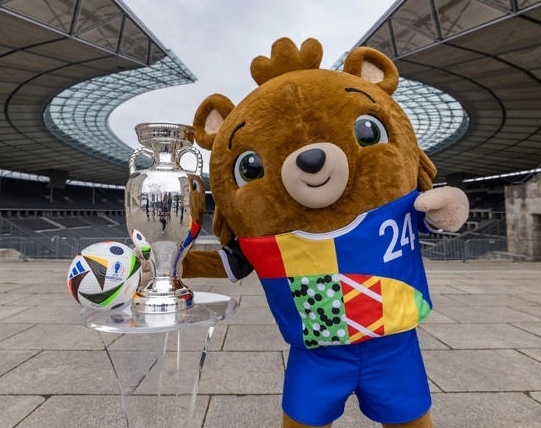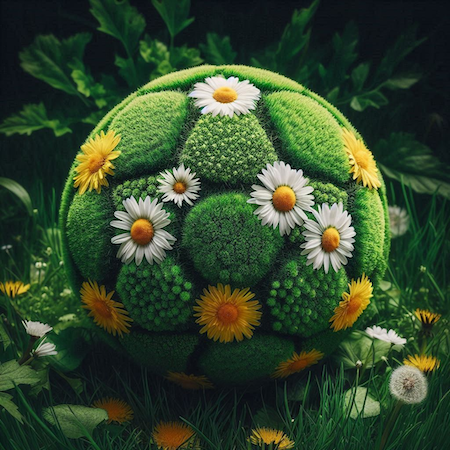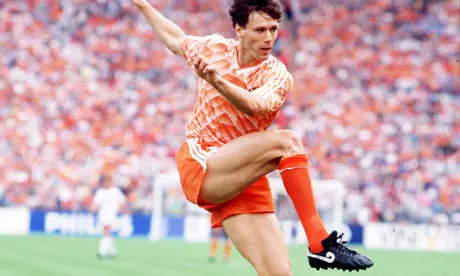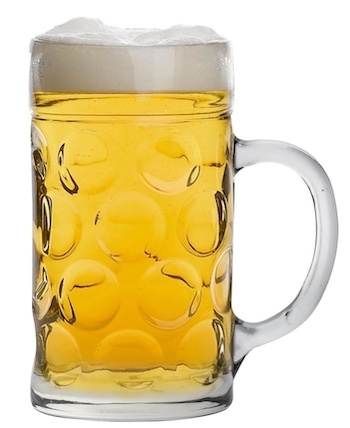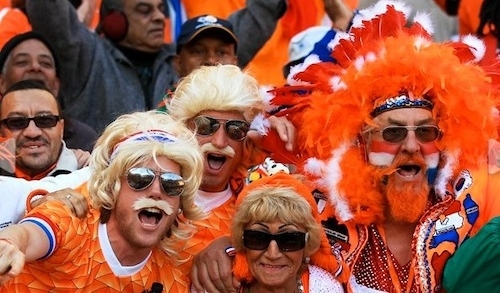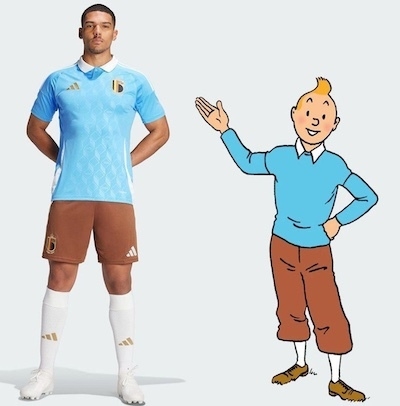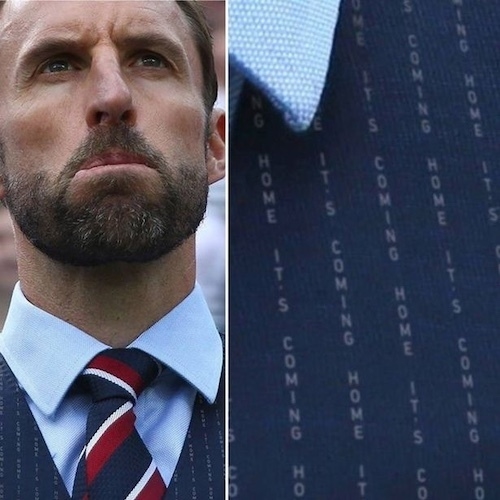the alternative A–Z of Euro 2024.
EURO 2024 is upon us, and to celebrate this veritable feast of football, we’ve rustled up a tasty A–Z of ‘who’d-have-thunk’ it facts, snippets and anecdotes. Interlaced with some totally spurious nonsense.
A
is for Albärt the ‘bear’, following in the pawsteps of 11 previous official mascots, kicking off with a clunky wooden Pinocchio at Italia 1980 (we cannot tell a lie). Notes to editors: bär means bear in German, and but for the discerning vote of a growl of European school kids, he might have been called Herzi von Bär.
B
is for Baddiel, Skinner & the Lightning Seeds, whose deluded but rousing ‘It’s Coming Home’ is optimistically rolled out every two years at major international footie tournaments. Trophies have defiantly stayed away since its cheeky debut in 1996.
C
is for contraband. The following are banned from all participating stadiums in Germany: photo and video cameras (without permission); drones; flags and banners bigger than 2m; sideburns longer than 6cm; food and drink, including fruit and water; smoking and vaping products; kippers; drugs and alcohol; weapons; live tigers; laser pointers; whistles; megaphones; spray cans; glass and plastic bottles; fob watches; backpacks and large bags, including suitcases and portmanteaux.
D
is for the so-called ‘Group of Death’. As far as Euro 2024 goes, this can be considered a dead heat. First off, there’s Group B featuring Spain, Italy & Croatia. Then there’s Group D, where Netherlands, France & Poland slug it out. Let’s hope for some football to die for before the third-placed teams bite the dust.
E
is for eco. This tourno aims to be the most sustainable ever. And that includes the official ball, officially known as FUSSBALLLIEBE (trs. ‘love of football’). The rather fussy graphics have been applied in recycled polyester and water-based inks, while the layers of the ball are made of bio-based materials like corn fibres, sugar cane, wood pulp and rubber. At World Cup 2026, look out for a ball made entirely of footballers’ hair and grass cuttings.
F
is for fisticuffs. With an estimated 2.7m fans descending on the country, Germany has gone all James Bond and roped in 300 security experts from Euro-playing countries as part of a hi-tech monitoring project, masterminded from huge central bunker equipped with 129 computers and a massive 430sq ft surveillance screen. Between 800 and 1,300 police will be deployed around the stadiums at each match, depending on the teams playing. All police leave has been cancelled.
G
is for goals (of course). There have been 829 goals scored in 337 matches across 16 EUROs. EURO 2020, with 142 goals in 51 games, was the highest-scoring competition. You have to go way back to the inaugural 1960 competition for the biggest score, a 5-4 victory for Yugoslavia against hosts France. But if you have to choose just one, it would have to be Marco van Basten’s sublime volley to see off the Soviet Union in the 1988 final.
H
is for the Henri Delaunay Cup, the impressive silverware coveted by Europe’s footballing elite. England’s only claim to the cup is that the current version was crafted by Asprey of London. This superseded the original French-made trophy, which was retired in 2004 — basically because it was too small. It’s named in honour of Henri Delaunay, the first General Secretary of UEFA, who came up with the bright idea of a pan-European footie championship. But sadly, he died five years before the inaugural tournament.
I
is for Italy. The ‘streetwise’ Azzurri broke English hearts in the EURO 2020 final. Remember those penalties? But then, in typically mercurial fashion, they failed to qualify for the Qatar World Cup. If Spalletti’s boys can go all the way again, they’ll be only the second team in history to win successive EUROs. ‘La Roja’ (Spain) were the first in 2008 and 2012.
J
Is for Jurgen. Klopp is back in Germany and has turned down all kinds of lucrative punditry deals for the EUROs. Instead, he’ll be watching from the stands as a fan. Let’s see how Arne slots in at Liverpool next season. Jurgen’s are big (football) boots to fill.
K
is for Kane. Harry just can’t stop scoring. He’s England’s leading marksman with an amazing 62 goals in 89 appearances. But he seems allergic to silverware. Even the switch from Spurs to Bayern didn’t do the trick. Harry is apparently as unlucky as a single magpie and a black cat walking under a ladder hand in hand. The curse of Kane, perhaps?
L
is for lager. The British pub may be having a hard time of it, but the EUROs should provide a frothy fillip. It’s estimated that 604 million pints will be throated during the tournament, pouring £2.4bn into the UK hospitality industry. Not to mention all the cervesas, biers, öls, birras and piwos served up elsewhere. Cheers, proost, saluti, salud, dzięki etc.
M
is for Mbappe. A new song especially composed for the French national team by one-time teen sensations Hansen. It goes something like this: “Mbappe, du bop
Du bop, du
Yeah, yeah.
Mbappe, du bop
Du bop, du
Yeah, yeah.”
N
is for number. Lucky shirt numbers beyond 26 will have to be set aside for this tournament. Every national squad has been allocated the numbers 1 to 26 and any rogue digits are strictly verboten. What’s more, first-choice goalies must wear 1. So don’t expect to see Trent Alexander-Arnold in his familiar 66, Phil Foden his favoured 47, or Micky van de Ven sporting his usual 37. In the grand scheme of things, this is likely to make 0 difference.
O
is for Oranje. Wherever they hup, Netherlands fans bring extraordinary exuberance and colour to international football. And given their small population, the team are perennial over-achievers, having won the EUROs once and been runners-up on three occasions. With two impressive 4-0 victories in their warmup matches, this could be the year the EUROs turn orange.
P
is for pension. Hats off to elder statesmen Cristiano Ronaldo (39) and Luka Modric (38), who can still teach the tournament’s young guns a thing or two. Gábor Király, the veteran Hungarian keeper, holds the record as the only 40-something player to have appeared at a EURO so far. However, this achievement could be eclipsed by 41-year-old centre back Pepe, who’s been named in the Portuguese squad.
Q
is for Qatar. The sports-guzzling Gulf state hasn’t made a bid for the Euros yet, but it’s only a matter of time before they find a loophole and throw their oily hat in the ring.
R
is for red cards. From Beckham to Rooney to Gascoigne, England’s chances at major tournaments have so often been scuppered by bonkers bookings and sendings-off. At the Euros, a red card or two yellows in different matches means sitting out the next match. Four yellows and you’re banned entirely. Holland, perhaps surprisingly, have had the most players sent off in Euros history. Not so much the red mist as the orange mist.
S
is for Simply Red. The official song of England’s 1996 EUROs was ‘We’re In This Together’ by Mancunian crooner and professional ginger top Mick Hucknall. The lighters-aloft ditty is probably best remembered in the Czech Republic where reached #8 in the chart. This year’s effort is a three-hander entitled ‘FIRE’ featuring Italian electronic trio MEDUZA, Grammy-nominated OneRepublic and German singer-songwriter Leony. Bring back Mick.
T
is for Tintin. You may be wondering why the Belgian second kit looks oddly familiar. Light blue top with white collar. Brown (yes, brown) shorts. White socks. That’s because it’s based on the preferred garb of Hergé’s comic-book hero Tintin, the bequiffed cub reporter who’s always getting in and out of scrapes along with his faithful hound Snowy (or Milou, in the original French). Look out for England’s Dennis the Menace strip in EURO 2028.
U
U is for Ukraine. Proudly flying the flag for their besieged country. Belgium are easily the strongest team in Group E, but the Blue & Yellows stand a mighty chance of progressing to the knockout stages.
V
is for VAR. The tech that everyone loves to hate is getting an update for the EUROs. The official match ball will feature ‘adidas connected ball technology’ which sends precise ball and player position AI data to match officials in real time, to help with tricky offside, handball and penalty decisions.
W
is for waistcoats. UK high street stores including Marks & Spencer reported a 35% increase in waistcoat sales during the 2018 World Cup as a result of England manager Gareth Southgate's favoured get-up. But he’s moved on … in a recent interview with GQ magazine, the sartorial Southgate revealed he’d be mainly wearing ‘short-sleeved knits’ at EURO 2024.
X
is for x-factor. England, Real Madrid and Stourbridge’s Jude Bellingham certainly has the x-factor on the pitch. And it turns out he has the Y-front factor off it. The 20-year-old is the new face of SKIMS, Kim Kardashian’s underwear brand. Let’s hope he gets more wins than drawers in the EUROs.
Y
is for yellow. Brazil, Dortmund, Villarreal … Norwich. Yellow is an iconic footballing colour and it gets due representation at EURO 2024. There’s an artistic smudge of it on Germany’s sleeves, referencing their national flag. Sweden have gone with light citron yellow shirts. And Ukraine are wearing full-blown Happy Egg yellow, evoking Brazil in their pomp.
Z
is for Zaïre-Emery. He’s not quite Zinedine Zidane standard yet, but PSG starlet Warren Zaire-Emery is certainly making his mark for club and country. Last year on his international debut, he became the second-youngest player ever to score for France in a 14–0 rout of Gibraltar.
